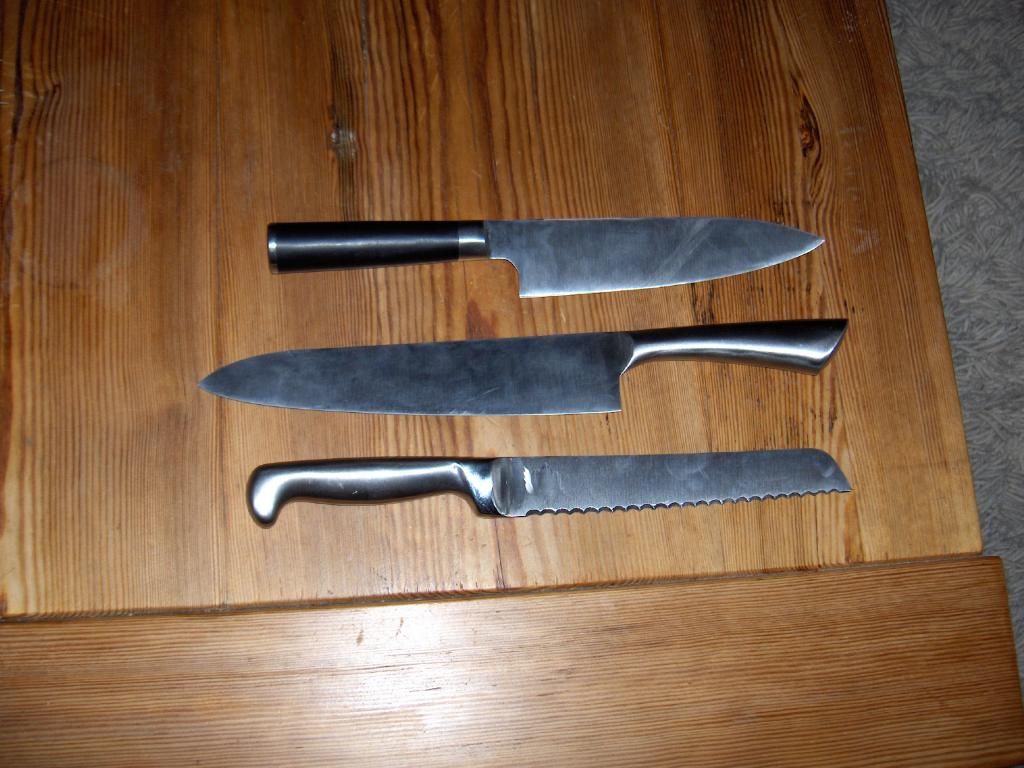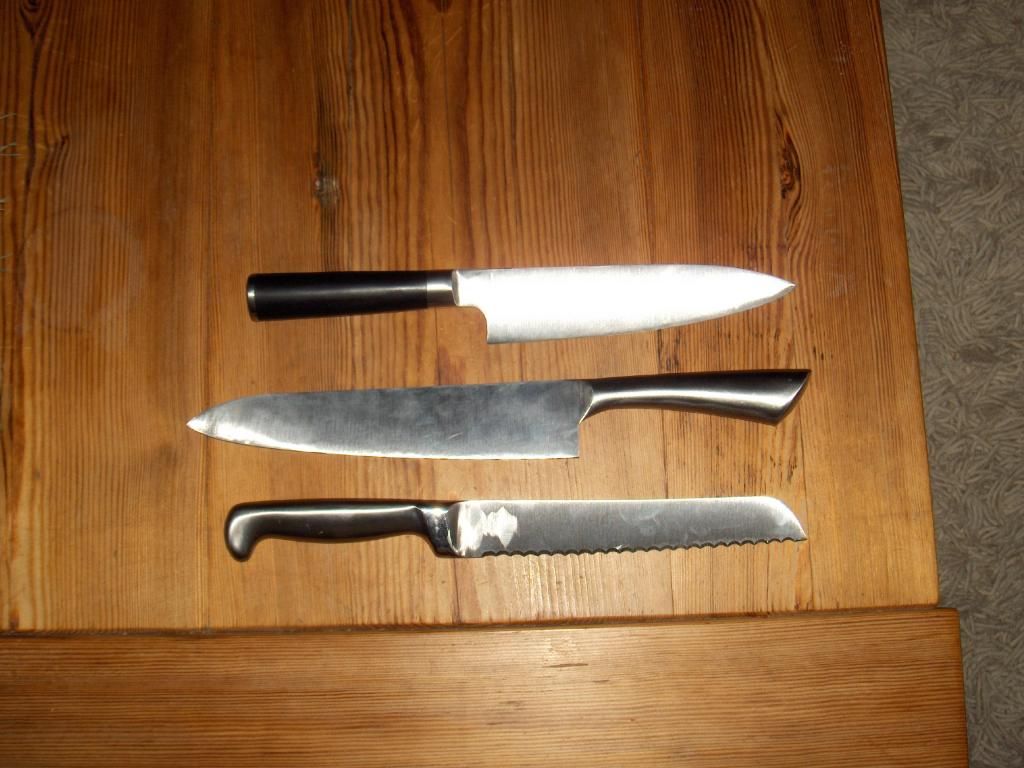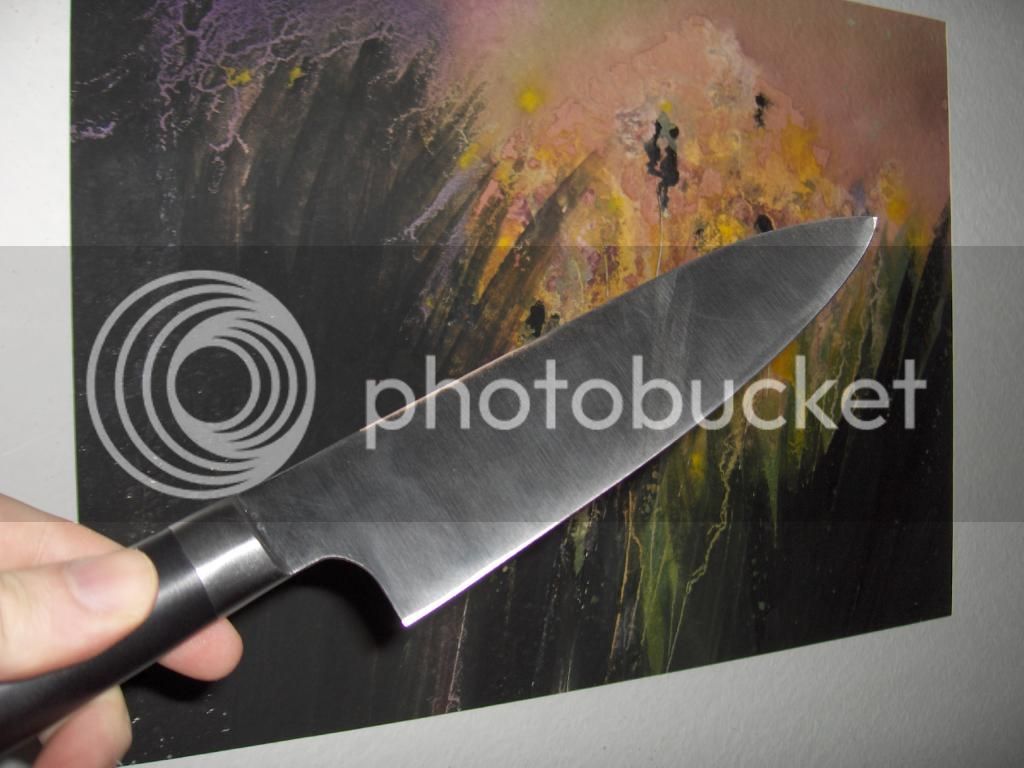My first ever belt sander arrived yesterday, and holy crap, what a fantastic tool that is. Actually it is just a cheap hobby machine, but it does work.
I am not much into the fancy blades, I mostly collect the utilitarian workhorses you would find in commercial kitchens (Wüsthof, F. Dick) and have bought quite a number of those and some no-name knives on ebay. Some of them turned out to be real crap, with the blade behind the bevel so thick that you easily split firewood into kindling with them using a wooden mallet.
I had stashed most of those knives in a dusty drawer in my basement, but with the belt sander I was able to give two of them an almost professional looking new finish on the bladeface and thin them down to a convex cross section so that the final, cutting bevel at 22° ist just half a millimeter or so wide. All this done by somebody who had never attempted to thin a knife or operated a belt sander before (and whose craftsman skills are pretty mediocre at best). I am really pleased with this thing.
For what it's worth it is this baby here:
http://www.amazon.de/gp/product/B002CZPNP8/?tag=skimlinks_replacement-20
One of the knives is this one:
http://www.ebay.de/itm/Profi-Kochme...hen_Genießen_Küchenmesser&hash=item20f2710536
(the price is ridiculous, I got mine for 10 with free shipping. For that price it is a good knife to experiment with)
I am not much into the fancy blades, I mostly collect the utilitarian workhorses you would find in commercial kitchens (Wüsthof, F. Dick) and have bought quite a number of those and some no-name knives on ebay. Some of them turned out to be real crap, with the blade behind the bevel so thick that you easily split firewood into kindling with them using a wooden mallet.
I had stashed most of those knives in a dusty drawer in my basement, but with the belt sander I was able to give two of them an almost professional looking new finish on the bladeface and thin them down to a convex cross section so that the final, cutting bevel at 22° ist just half a millimeter or so wide. All this done by somebody who had never attempted to thin a knife or operated a belt sander before (and whose craftsman skills are pretty mediocre at best). I am really pleased with this thing.
For what it's worth it is this baby here:
http://www.amazon.de/gp/product/B002CZPNP8/?tag=skimlinks_replacement-20
One of the knives is this one:
http://www.ebay.de/itm/Profi-Kochme...hen_Genießen_Küchenmesser&hash=item20f2710536
(the price is ridiculous, I got mine for 10 with free shipping. For that price it is a good knife to experiment with)
Last edited by a moderator:







